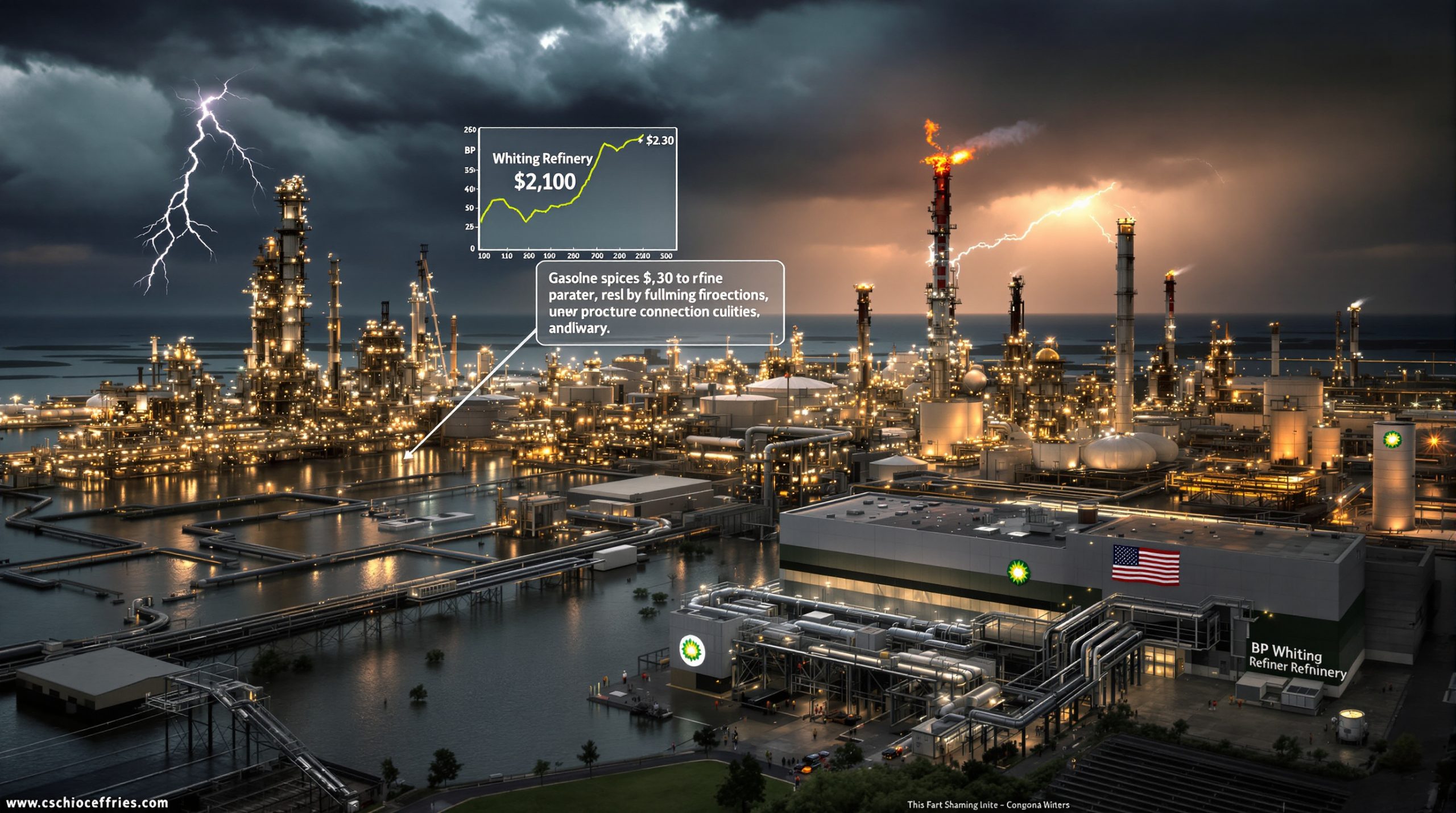South Korea's Petrochemical Industry Capacity Reduction: Market Implications and Strategic Shifts
South Korea's petrochemical sector is undertaking significant capacity reductions amid persistent global oversupply, marking a strategic shift for one of Asia's industrial powerhouses. These cuts come as part of a broader industry recalibration that could reshape global petrochemical markets for years to come.
Why Is South Korea Cutting Petrochemical Capacity?
The South Korean petrochemical industry, long a cornerstone of the country's export-driven economy, faces unprecedented challenges that have forced major producers to implement strategic capacity reductions. These decisions reflect both short-term market pressures and longer-term structural changes in the global petrochemical landscape.
Current Market Conditions Driving Capacity Cuts
South Korea's petrochemical producers are responding to a perfect storm of market conditions that have eroded profitability and operational sustainability:
- Sustained global oversupply across multiple product categories, with production capacity exceeding demand by 15-20% in key segments
- Margin compression due to intensifying competition from regional producers, particularly in China and the Middle East
- Rising feedstock and energy costs that disproportionately impact South Korea's import-dependent producers
- Weakening demand in key export markets, particularly China, as economic growth moderates
- Increasing freight and logistics costs that further squeeze already thin margins
According to industry observers, the current market imbalance represents one of the most significant challenges to the sector in over a decade. "What we're seeing isn't just a cyclical downturn—it's a structural shift requiring strategic responses rather than tactical adjustments," notes a senior industry analyst at the Korea Petrochemical Industry Association.
Scope of Planned Reductions
The capacity reduction initiative encompasses a range of measures across South Korea's major petrochemical complexes:
- Temporary idling of approximately 15-20% of ethylene production capacity
- Permanent decommissioning of older, less efficient naphtha crackers and related units
- Extended maintenance turnarounds stretching from typical 4-6 weeks to 8-12 weeks
- Postponement or cancellation of previously announced capacity expansion projects worth an estimated $4-5 billion
- Conversion of commodity chemical lines to specialty product manufacturing
These measures are being implemented on a rolling basis, with most companies targeting completion of initial reduction phases by Q2 2026.
How Severe Is The Global Petrochemical Oversupply?
The current market glut in petrochemicals represents one of the most pronounced supply-demand imbalances in the industry's history, with ramifications extending across the entire value chain.
Quantifying the Supply-Demand Imbalance
The severity of the global petrochemical oversupply can be measured across several key metrics:
- Capacity utilization rates have fallen to approximately 75-80% across major Asian producers, well below the 85-90% threshold typically considered necessary for sustainable profitability
- Inventory levels at major trading hubs have reached 30-45 days of supply, compared to historical averages of 20-25 days
- Price spreads between feedstocks and finished products have narrowed by 30-40% over the past 18 months
- Export volumes from South Korea to key markets declined by 12% year-over-year in 2024
- Operating rates at several major Korean complexes have been reduced to 65-70%, compared to typical rates of 90-95%
"The industry is experiencing a classic example of what economists call 'capacity overhang'—where previous investment decisions based on optimistic growth projections have created structural oversupply that can take years to resolve through normal market mechanisms," explains an economics professor at Seoul National University specializing in industrial policy.
Regional Dimensions of Oversupply
The petrochemical oversupply situation varies significantly by region, creating complex cross-currents in global trade flows:
Asia Pacific Region:
- Most severe oversupply conditions, particularly in ethylene, polyethylene, and polypropylene
- Capacity additions in China have outpaced demand growth by approximately 2-3x since 2019
- Regional operating rates averaging 70-75%, with some facilities running as low as 60%
Middle East Region:
- Continued capacity growth despite market signals, driven by national industrialization strategies
- Competitive advantage from low-cost feedstock partially offsetting market pressures
- Strategic pivot toward greater integration with downstream manufacturing
North America Region:
- Relatively balanced market for certain products due to advantaged feedstock position
- Facing export challenges as traditional Asian markets become increasingly self-sufficient
- Selective capacity rationalization underway, focused on older, less efficient assets
Europe Region:
- Structural overcapacity in several product categories compounded by high energy costs
- Accelerating consolidation and rationalization of aging production infrastructure
- Strategic shift toward specialty chemicals and circular economy initiatives
Which Korean Companies Are Leading The Capacity Reduction?
South Korea's major petrochemical producers are implementing coordinated but company-specific approaches to capacity management, with different strategies reflecting their unique market positions and asset portfolios.
Key Industry Players Implementing Cuts
The capacity reduction initiative involves all of South Korea's leading petrochemical companies, with varying approaches and timelines:
LG Chem:
- Reducing ethylene production by approximately 400,000 metric tons annually at Yeosu complex
- Implementing rotating maintenance schedules to reduce overall output by 15-18%
- Accelerating transition toward specialty chemicals and battery materials
- Postponing previously announced capacity expansions worth approximately $1.2 billion
Lotte Chemical:
- Idling approximately 500,000 metric tons of annual ethylene capacity across multiple sites
- Extending maintenance periods at Daesan and Yeosu complexes by 30-45 days
- Optimizing production scheduling to reduce output of oversupplied products
- Permanently retiring oldest production units representing about 7% of total capacity
Hanwha Solutions:
- Reducing production rates across petrochemical division by an average of 20%
- Implementing selective shutdowns targeting least efficient production lines
- Accelerating conversion of some units to specialty chemical production
- Focusing remaining capacity on higher-margin product categories
SK Innovation:
- Adjusting refining operations that feed petrochemical units to reduce overall output
- Implementing extended maintenance at key production units
- Repositioning toward premium products and materials for EV batteries
- Exploring strategic partnerships to optimize regional production networks
GS Caltex:
- Reducing aromatic compound production by approximately 15%
- Adjusting refining operations to optimize product slate away from petrochemical feedstocks
- Implementing voluntary production constraints in coordination with industry peers
- Postponing planned capacity expansions in polyolefins
Strategic Approaches to Capacity Management
Korean producers are employing sophisticated capacity management strategies that balance short-term market responses with longer-term strategic objectives:
- Coordinated maintenance scheduling to ensure market stabilization without creating supply disruptions
- Selective product portfolio management focusing cuts on most oversupplied categories
- Strategic idling of newer, more efficient units that can be restarted when market conditions improve
- Permanent closure of older, less efficient assets as part of broader modernization initiatives
- Conversion of commodity chemical capacity to specialty product manufacturing
Industry analysts note that the current reduction program represents approximately 2.5-3.0 million metric tons of annual ethylene-equivalent capacity, or roughly 20-25% of South Korea's total production capability.
What Products Are Most Affected By The Capacity Cuts?
The capacity reductions are strategically targeting specific petrochemical product categories where oversupply is most pronounced and margins are under the greatest pressure.
Primary Products Facing Reductions
The capacity cuts are concentrated in several key product categories, reflecting varying degrees of market imbalance:
Basic Olefins:
- Ethylene: Production cuts of 1.5-2.0 million metric tons annually (15-20% of capacity)
- Propylene: Reduction of approximately 800,000-1,000,000 metric tons (12-15% of capacity)
- Butadiene: Output reduction of 150,000-200,000 metric tons (10-12% of capacity)
Polyolefins:
- High-density polyethylene (HDPE): Production cuts of 600,000-750,000 metric tons (18-20% of capacity)
- Linear low-density polyethylene (LLDPE): Reduction of 400,000-500,000 metric tons (15-18% of capacity)
- Polypropylene (PP): Output reduction of 700,000-850,000 metric tons (12-15% of capacity)
Aromatics:
- Benzene: Production cuts of 300,000-400,000 metric tons (10-12% of capacity)
- Paraxylene: Reduction of 500,000-650,000 metric tons (15-18% of capacity)
- Styrene monomer: Output reduction of 200,000-250,000 metric tons (12-15% of capacity)
Synthetic Rubbers:
- Styrene-butadiene rubber (SBR): Production cuts of 100,000-150,000 metric tons (15-18% of capacity)
- Butadiene rubber (BR): Reduction of 80,000-100,000 metric tons (10-12% of capacity)
Base Chemicals:
- Methanol: Output reduction of 200,000-250,000 metric tons (8-10% of capacity)
- Ethylene glycol: Production cuts of 300,000-350,000 metric tons (15-18% of capacity)
"The reduction strategy targets products with the most challenging supply-demand fundamentals while preserving capacity in segments where Korean producers maintain competitive advantages or serve critical domestic industries," explains a chemical industry consultant based in Seoul.
Impact on Downstream Products
The capacity reductions will have cascading effects through downstream value chains, creating both challenges and opportunities:
- Specialty chemicals may experience selective tightening as feedstock availability adjusts
- Consumer plastics manufacturers will need to recalibrate supply chains and potentially adjust formulations
- Industrial customers in automotive, electronics, and construction sectors may face procurement adjustments
- Export markets will see changing trade patterns as Korean volume reductions alter regional balances
A production manager at a major Korean petrochemical complex notes: "We're carefully balancing reductions to minimize disruptions to key customers and strategic markets. This isn't about creating artificial shortages—it's about restoring sustainable market fundamentals."
How Will This Affect Global Petrochemical Markets?
South Korea's capacity reduction decisions will influence global market dynamics, potentially accelerating industry rebalancing efforts while creating ripple effects across regional supply chains.
Expected Market Responses
The industry-wide capacity reductions are likely to trigger several market responses as the adjustments work through the global system:
- Gradual price stabilization in key product categories, with potential for modest increases in most oversupplied segments by Q3-Q4 2025
- Improved utilization rates at remaining production facilities, potentially reaching 80-85% by early 2026
- Accelerated rationalization of less competitive assets in other regions, particularly Europe and parts of Southeast Asia
- Recalibration of global trade flows as export volumes adjust and regional self-sufficiency increases
The capacity reductions are expected to remove approximately 2-3% of global ethylene-equivalent capacity, which could help address the estimated 15-20% oversupply situation when combined with continued demand growth and similar actions by producers in other regions.
Timeline for Market Rebalancing
Market analysts project a phased rebalancing process with distinct stages:
Short-term (3-6 months):
- Limited immediate price impact as existing inventories continue to be drawn down
- Gradually improving producer sentiment as future supply outlooks tighten
- Initial adjustments to procurement strategies by major customers
- Early signs of operational discipline spreading to producers in other regions
Medium-term (6-12 months):
- More visible improvement in supply-demand balance for most affected products
- Stabilizing margins for producers as capacity utilization improves
- Potential acceleration of capacity rationalization decisions by marginal producers
- Strategic repositioning by traders and intermediaries as market dynamics shift
Long-term (1-2 years):
- Return to more sustainable industry economics with operating rates above 85%
- Selective reinvestment in modernization and specialty capacity
- Emergence of more disciplined capacity addition cycles across the industry
- Integration of capacity management with broader sustainability initiatives
"The industry is learning that in a more mature market environment, capacity discipline becomes as important as capacity growth was during the expansion phase," observes an industry economist at a major Korean financial institution.
What Are The Economic Implications For South Korea?
The petrochemical capacity reductions will have significant economic implications for South Korea's industrial sector and broader economy, though the impacts will be mitigated by the strategic nature of the adjustments.
Impact on National Economic Indicators
The capacity cuts will influence several economic metrics at the national level:
- Industrial production index: Potential reduction of 0.3-0.5 percentage points in overall industrial output
- Export volumes: Estimated decrease of $4-5 billion in annual petrochemical exports (approximately 1% of total exports)
- Employment adjustments: Limited direct job impacts (estimated 1,500-2,000 positions) due to natural attrition and redeployment strategies
- Energy consumption: Reduction of approximately 5-7% in industrial natural gas and naphtha usage
- Corporate investment: Redirection of approximately $3-4 billion in capital expenditure from expansion to modernization and specialization
A representative from Korea's Ministry of Trade, Industry and Energy notes: "While there will be some short-term adjustment costs, the restructuring is necessary to ensure the long-term competitiveness of this critical industrial sector."
Long-term Industrial Strategy Considerations
The current capacity reductions reflect broader strategic considerations in South Korea's industrial policy:
- Accelerating transition toward higher-value specialty chemicals with greater intellectual property protection and higher margins
- Increasing focus on sustainability initiatives including carbon reduction, circular economy, and bio-based materials
- Strategic repositioning within regional value chains to focus on segments where Korean producers maintain competitive advantages
- Investment redirection toward emerging growth segments such as battery materials, semiconductor chemicals, and advanced materials
- Integration with broader industrial digitalization and Industry 4.0 initiatives
The Korea Petrochemical Industry Association estimates that while conventional petrochemical capacity may decrease by 15-20%, specialty chemical capacity could increase by 25-30% over the next five years as part of this strategic pivot.
How Does This Compare To Previous Industry Cycles?
The current capacity reduction initiative follows historical patterns of industry adjustment, though with some distinctive characteristics that reflect the maturing global petrochemical market.
Historical Context of Petrochemical Cycles
The petrochemical industry has experienced several major cycles of expansion and contraction over the past two decades:
2008-2009: Global Financial Crisis Cycle
- Demand collapsed by 15-20% in major markets
- Reactive capacity shutdowns implemented with limited coordination
- Rapid recovery driven by Chinese stimulus and infrastructure investment
- Limited permanent capacity rationalization despite short-term severity
2014-2016: China Growth Slowdown Cycle
- Capacity additions (particularly in China) outpaced moderating demand growth
- Margins compressed by 30-40% across multiple product categories
- Selective rationalization of older assets, primarily in developed markets
- Recovery driven by oil price declines and resulting petrochemical demand boost
2019-2020: Pandemic Disruption Cycle
- Unprecedented demand volatility across end-use markets
- Supply chain disruptions creating temporary regional imbalances
- Accelerated strategic reviews leading to permanent capacity decisions
- Uneven recovery patterns across different product categories and regions
2023-2025: Structural Overcapacity Cycle (Current)
- Persistent global oversupply following post-pandemic capacity additions
- Coordinated industry response focusing on sustainable rebalancing
- Integration of capacity decisions with broader energy transition strategies
- More sophisticated market monitoring and adjustment mechanisms
Distinctive Features of Current Cycle
The present capacity reduction differs from previous cycles in several important ways:
- More coordinated industry-wide approach to rebalancing, with greater information sharing and aligned timing
- Greater emphasis on permanent structural adjustments versus temporary cuts that would be quickly reversed
- Integration with broader sustainability and energy transition strategies rather than purely cyclical responses
- More sophisticated market monitoring mechanisms allowing for calibrated production adjustments
- Strategic differentiation between commodity and specialty segments rather than across-the-board cuts
"Previous cycles were primarily reactive, whereas the current adjustment represents a more strategic, forward-looking response to structural market changes," explains an industry veteran with over 30 years of experience in South Korea's petrochemical sector.
What Role Does China Play In The Global Oversupply?
China's massive petrochemical capacity expansion has been a central factor in the global market imbalance that prompted South Korea's reduction decisions, creating new competitive dynamics throughout the region.
China's Capacity Growth Trajectory
China's petrochemical sector has undergone extraordinary expansion over the past decade:
- Ethylene capacity increase from approximately 15 million metric tons in 2012 to over 40 million metric tons by 2023
- Self-sufficiency ratios rising from 50-60% to 80-90% across major product categories
- Transition from net importer to potential net exporter in polypropylene, PVC, and several other products
- Continued capacity growth with an additional 15-20 million metric tons of ethylene-equivalent capacity under construction or planned
This capacity expansion has been driven by several strategic factors:
- National self-sufficiency goals to reduce import dependency
- Integration with refining expansion to capture more value from crude oil processing
- Strategic positioning of petrochemicals as a higher-value industrial sector
- Provincial economic development initiatives promoting industrial investment
- Coal-to-chemicals pathways leveraging China's domestic coal resources
"China's petrochemical expansion represents one of the most significant industrial capacity buildouts in history, comparable to what we saw in steel and aluminum over previous decades," notes an industrial economist at a major international consulting firm.
Competitive Dynamics Between Korean and Chinese Producers
The relationship between South Korean and Chinese petrochemical sectors has evolved dramatically:
- Export market competition has intensified across Southeast Asia, with Chinese producers gaining market share
- Cost position comparisons have shifted as Chinese scale and integration advantages partially offset higher energy costs
- Technology gaps have narrowed as Chinese producers have invested in world-scale, state-of-the-art facilities
- Strategic specialization has emerged with Korean producers focusing more on higher-value, specialty segments
A strategic planning executive at a Korean petrochemical company explains: "We're no longer competing just on scale or basic efficiency—we're increasingly differentiating through technology, customer relationships, and specialty applications where we maintain advantages."
How Are Other Asian Producers Responding?
South Korea's capacity reduction initiatives are prompting responses from other major petrochemical producers across Asia, potentially leading to broader regional rebalancing.
Regional Industry Responses
Other Asian petrochemical producers are implementing various strategies in response to the market oversupply and South Korea's capacity adjustments:
Japan:
- Accelerating consolidation through mergers and joint ventures
- Rationalizing aging facilities, particularly naphtha crackers built in the 1970s-1980s
- Deepening specialization in high-performance materials and specialty chemicals
- Exploring integration opportunities with Korean producers in select product categories
Taiwan:
- Focusing investment on specialty chemical segments with higher barriers to entry
- Implementing selective capacity reductions in commodity products
- Leveraging integration with domestic semiconductor and electronics industries
- Optimizing refining-petrochemical integration to improve overall competitiveness
Singapore:
- Emphasizing operational excellence and efficiency improvements at integrated complexes
- Leveraging position as a regional trading hub to optimize product flows
- Investing in sustainable and bio-based chemical initiatives
- Maintaining focus on high-value specialty products and performance materials
Thailand:
- Balancing between capacity growth in areas of competitive advantage and constraint in oversupplied segments
- Leveraging feedstock flexibility across naphtha, LPG, and natural gas
- Focusing on serving regional Southeast Asian demand growth
- Implementing selective debottlenecking rather than major capacity additions
Malaysia:
- Optimizing integration between national oil company and petrochemical operations
- Selectively expanding in areas of feedstock advantage
- Implementing more disciplined capacity addition timelines
- Focusing on serving domestic and regional market needs
Potential for Coordinated Regional Approach
Industry observers note increasing signals of informal regional coordination:
- Information sharing on production schedules and maintenance timing to avoid market disruptions
- Alignment on capacity growth restraint in most oversupplied product categories
- Joint industry initiatives on sustainability, carbon reduction, and plastic waste management
- Cross-investment and strategic partnerships creating more interconnected regional operations
"We're seeing the emergence of a more mature, coordinated approach to capacity management across the region," notes a petrochemical industry consultant specializing in Asian markets. "This reflects recognition that destructive competition ultimately harms all participants in the value chain."
What's The Outlook For South Korea's Petrochemical Industry?
Despite current challenges, South Korea's petrochemical industry is pursuing strategic repositioning for long-term competitiveness, leveraging technological advantages and innovation capabilities.
Medium-term Industry Transformation
South Korean producers are implementing several strategic initiatives that will reshape the industry over the next 3-5 years:
- Accelerating transition toward specialty chemicals with 30-40% of investment redirected to high-value segments
- Increasing R&D investments reaching 3-4% of revenue (up from historical 1-2%)
- Exploring strategic partnerships with technology providers and end-use customers
- Integrating digital technologies including advanced process control, predictive maintenance, and supply chain optimization
- Implementing carbon reduction initiatives targeting 20-30% emissions reduction by 2030
The industry transformation is supported by approximately $8-10 billion in strategic investments across the major producers, focusing on:
- Advanced materials for electric vehicles, renewable energy, and electronics
- High-performance polymers for specialized industrial applications
- Bio-based and circular economy solutions to address sustainability challenges
- Digitalization and process innovation to improve operational efficiency
- Carbon capture and utilization technologies to reduce environmental footprint
Long-term Competitive Positioning
The industry's long-term strategy focuses on several key elements to ensure sustainable competitiveness:
- Developing proprietary technologies in high-growth specialty segments where Korea can maintain barriers to entry
- Pursuing carbon reduction initiatives aligned with national commitments and customer expectations
- Establishing leadership in sustainable materials including bio-based chemicals and circular solutions
- Optimizing regional production networks through strategic partnerships and asset specialization
- Deepening integration with key domestic industrial sectors including semiconductors, displays, and batteries
"The current market challenges are accelerating a transition that was already underway," explains a professor of chemical engineering at Korea Advanced Institute of Science and Technology (KAIST). "Korean producers are essentially using this period of adjustment to fundamentally reposition for the next growth phase."
FAQ About South Korea's Petrochemical Capacity Reduction
When will the capacity reductions take effect?
The capacity reductions are being implemented in phases, with initial cuts already underway as of mid-2024. Major producers have announced rolling implementation schedules extending through 2025, with the most significant reductions targeted for completion by Q1 2026. The phased approach is designed to minimize market disruptions while allowing for adjustments based on evolving market conditions.
Will these cuts lead to product shortages or price spikes?
Industry analysts expect minimal risk of significant shortages or price spikes. The reductions are being carefully calibrated to address oversupply without creating market disruptions. Substantial inventory levels throughout the supply chain provide additional buffers against short-term imbalances. Some specialty products may experience tighter supply conditions, but major commodity categories should maintain adequate availability with more balanced market fundamentals.
How will these reductions affect South Korea's export position?
South Korea will likely maintain its position as a major petrochemical exporter, though with more selective market participation. The focus is shifting toward higher-value products and strategic export markets where Korean producers maintain competitive advantages. Overall export volumes may decrease by 15-20% in volume terms, but the value impact may be partially offset by improved pricing and product mix shifts toward higher-value categories.
Are these capacity cuts permanent or temporary?
The current reduction program includes both temporary and permanent elements. Approximately 40-50% of the cuts involve temporary idling of production lines that can be restarted when market conditions improve. The remaining 50-60% involve permanent decommissioning of older, less efficient units as part of longer-term restructuring, or conversion to alternative product manufacturing. This balanced approach provides flexibility while ensuring meaningful progress toward structural rebalancing.
How does this affect South Korea's climate commitments?
The capacity reductions align with South Korea's broader carbon reduction goals by eliminating some of the least efficient and most carbon-intensive production units. Many producers are using this opportunity to accelerate investments in lower-carbon production technologies, energy efficiency improvements, and circular economy initiatives. The industry association estimates these changes could reduce the sector's carbon footprint by 8-10% over the next 3-5 years, contributing to national climate commitments.
Further Exploration:
Readers interested in learning more about global petrochemical market trends can explore related educational content on oil price stagnation insights and OPEC oil market influence, which offer regular updates on energy markets and petrochemical industry developments. Additionally, understanding commodity market volatility and US‑China trade war impacts provides valuable context for evaluating the broader economic factors affecting petrochemical markets. For those interested in policy implications, the US economy tariffs analysis offers insights into how trade policies are reshaping global industrial competitiveness.
Ready to Invest in ASX Companies Before the Next Market-Moving Discovery?
Discovery Alert's proprietary Discovery IQ model instantly identifies significant mineral discoveries on the ASX, transforming complex geological data into actionable investment insights. Explore historic discoveries that delivered exceptional returns on our discoveries page and position yourself ahead of the market.




